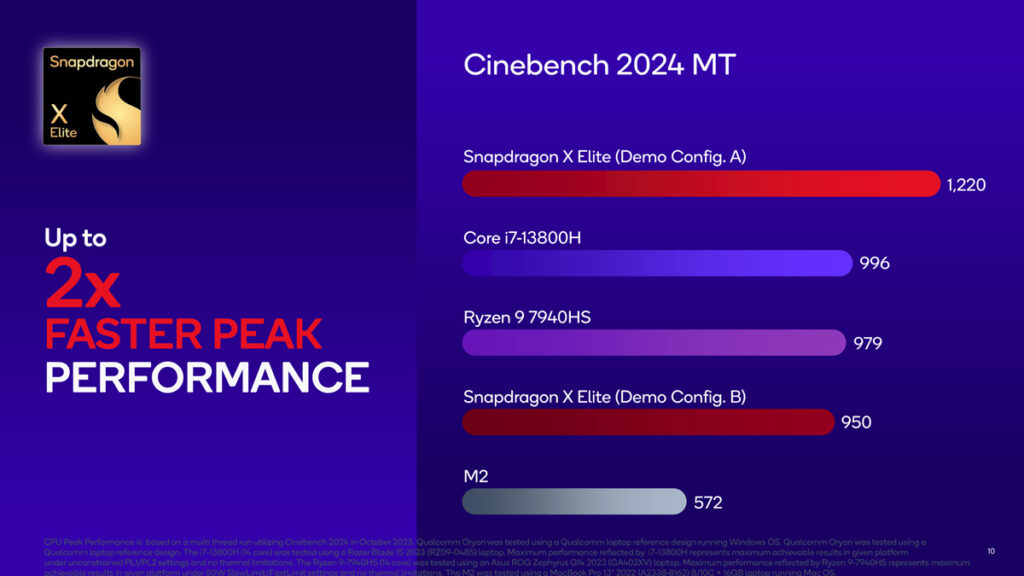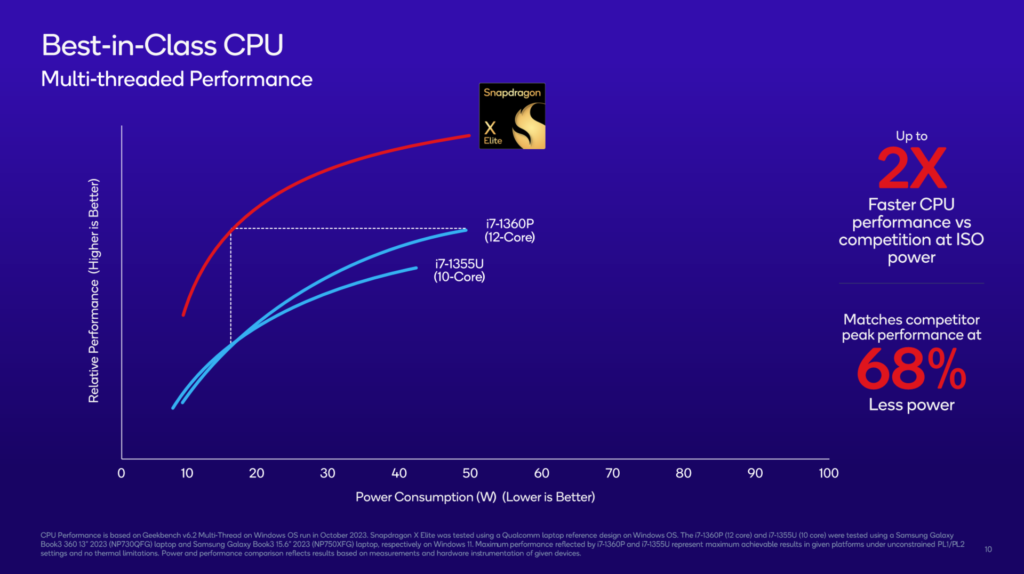Benchmark tests conducted by various tech publications suggest that Qualcomm’s latest Snapdragon X Series chips are outperforming some of their key competitors from Apple, Intel, and AMD. This development marks a significant shift in the mobile processing landscape and could have a major impact on the future of smartphones and laptops.
Benchmark Victories and Historical Context:
- Surpassing Established Players: The Snapdragon X Series reportedly outperformed Apple’s M series chips in single-core performance, a category where Apple has traditionally held an advantage. It also outpaced Intel’s Core Ultra processors and AMD’s Ryzen mobile chips in multi-core performance.
- Shifting the Balance: Historically, Qualcomm’s Snapdragon chips have been known for their strong performance in Android smartphones, while Apple’s M series chips have dominated the high-end tablet and laptop market. This new benchmark data suggests Qualcomm is closing the gap and potentially forging ahead in certain areas.

Reasons Behind the Performance Boost:
There’s a lack of official details regarding the specific reasons behind the Snapdragon X Series’ impressive benchmark scores. However, possible contributing factors could include:
- Advanced Architecture: Qualcomm might have adopted a more modern processor architecture in the X Series, leading to improved efficiency and performance.
- Focus on Mobile Optimization: Snapdragon chips are designed specifically for mobile devices, potentially giving them an edge over processors intended for wider applications like laptops.
- AI Integration: The X Series’ focus on integrating powerful Neural Processing Units (NPUs) could be driving impressive performance in AI-related tasks and benchmarks.

Future Impact: Potential for a More Competitive Market
The X Series’ strong performance has several potential implications for the future:
- Intensified Competition: This development could lead to a more competitive mobile processor market, with both Qualcomm and its rivals pushing the boundaries of innovation.
- Benefits for Consumers: Consumers might benefit from a wider range of high-performance smartphone and laptop options at potentially more competitive price points.
- Focus on AI Integration: The emphasis on AI performance could lead to a future where mobile devices excel at tasks like image and speech recognition, natural language processing, and augmented reality.
Uncertainty and Need for Real-World Testing:
It’s important to note that benchmark tests don’t always translate directly to real-world performance. Battery life, software optimization, and user experience will still play a crucial role in determining which processors ultimately win over consumers.
A Promising Development for Mobile Processing
The reported performance gains of the Snapdragon X Series are a promising development for the mobile processing landscape. This shift could lead to a more competitive market with faster, more efficient, and AI-powered devices. However, real-world testing and user experience will ultimately determine the long-term impact of this advancement.











